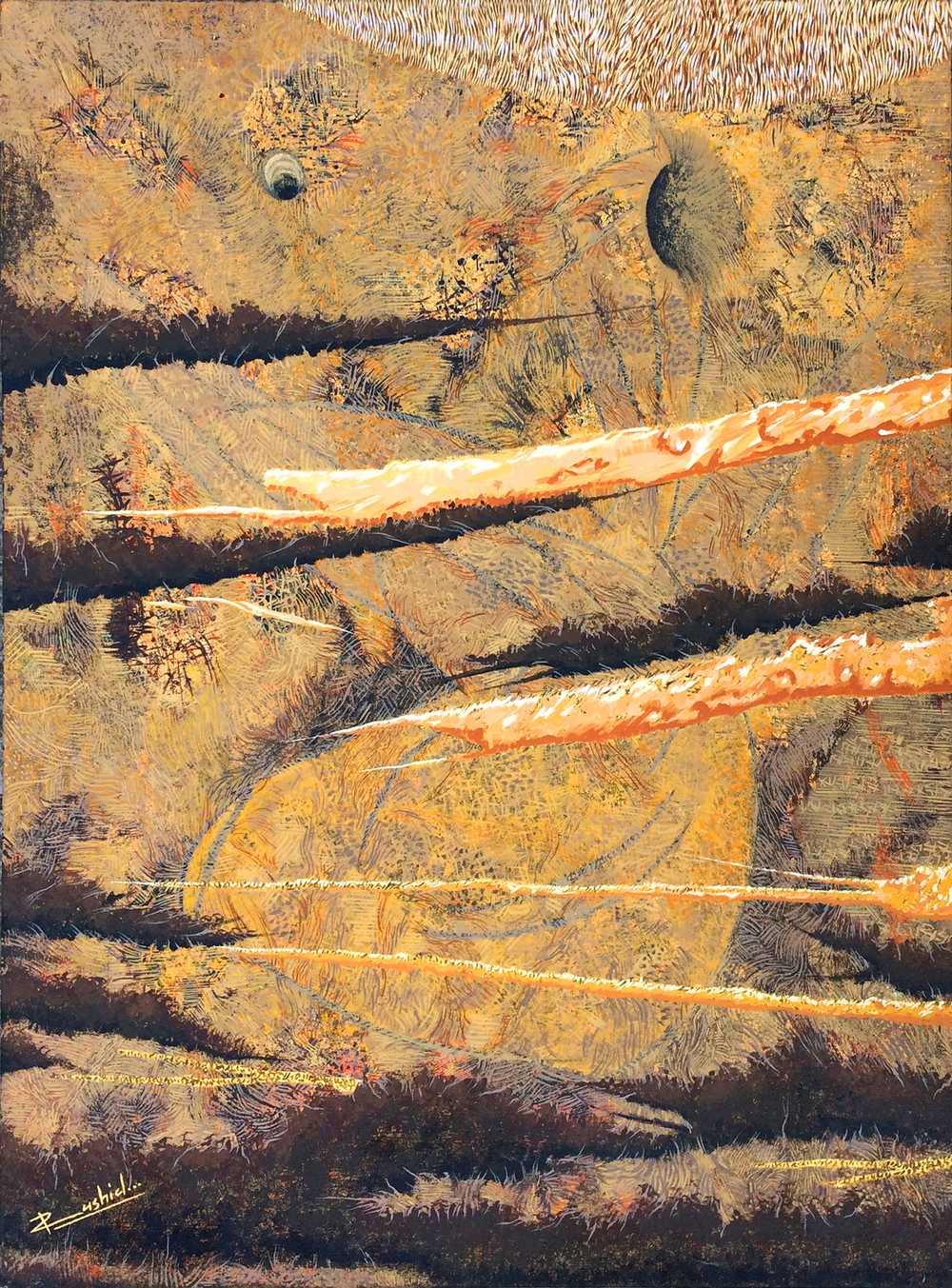#InConversation with Rashid Ahamad
By Davangi Pathak | Oct 10 2024 · 20 mins
Inspired by the mysteries of the universe, nature, and spirituality, Ahamad's paintings are deeply rooted in his personal experiences and reflections. He hopes that viewers will connect with the emotions and ideas conveyed in his work. In this interaction, we will delve into Rashid's journey from experimental to abstract art .
Davangi: You always wanted to be an IAS officer. Your journey from being a UPSC aspirant to artist has been very interesting. Please tell us more about it.
Rashid: Since childhood, I have always dreamt of doing something big, of becoming great, though I didn’t know how. I struggled with mathematics and began distancing myself from studies early on, yet I had a deep love for learning. At first, I wanted to become a doctor. I was good at talking, and people liked to converse with me. My father once suggested I become a lawyer, saying that it would suit my skills. I considered it until I learned that a judge ranks higher, and so I set my sights on becoming a judge. Later, during my graduation, I discovered that the District Magistrate holds even more power, and I aspired to that role. Throughout my life, I’ve always aimed high and dreamed big.
It was during graduation that I realized neither my Hindi nor my English was strong, and mathematics was certainly not my strength. However, I was interested in painting and had some talent for drawing. When I was in intermediate, there was a painter in my neighborhood who primarily made signboards and occasionally portraits. I often visited him, and my interest in art grew even stronger.
One of my childhood teachers suggested that I pursue a Bachelor of Fine Arts (BFA). This suggestion struck a chord, and I felt like I had found my true calling. When I was in the first year of my BA, I took the entrance exam for BFA but didn’t get in. I tried again the next year but failed once more. On my third attempt, after waiting anxiously, I was finally admitted. Once there, I saw that many of my peers were incredibly skilled. Some excelled in still life, others in watercolor landscapes, and everyone seemed better than me.
Despite feeling out of place, I became mentally determined to become an artist. Someone once told me that M.F. Husain became famous through relentless sketching and became one of India's greatest artists. Inspired by this, I decided I wanted to be great and famous like him. After returning from Allahabad University at 5 pm, I would spend hours sketching at Allahabad Railway Junction until 11 pm, repeating this routine for four years. I found immense joy in sketching.
During college, I became deeply influenced by Leonardo da Vinci and Michelangelo. Their dedication inspired me to seek the same level of commitment in my own work, and I pushed myself to work as hard as I could. After completing my BFA from Allahabad University, I knew I needed to take the next step.
I moved to Delhi to pursue my MFA and was admitted to the College of Art at Delhi University—one of the biggest achievements of my life. This journey wasn’t easy, but my determination to dream big helped me persevere. In this new city, with new people and new challenges, I resolved never to look back.
At the College of Art, I focused on drawing and painting, learning a great deal about creative processes, working on large canvases, experimenting with my work, and staying attuned to contemporary art trends. By the time I completed my MFA, I was selected for the National Lalit Kala Akademi and later for the SAARC International Camp in the Maldives. Representing Lalit Kala Akademi at this international camp felt like a dream come true.
By then, I was certain that art was my true calling. Since graduating, I’ve devoted myself entirely to my work. The past 10 years have been spent in this pursuit, and I intend to continue focusing solely on art. I want to be remembered, long after my death, like Husain, Tyeb Mehta, Leonardo da Vinci, and Michelangelo. My journey continues, driven by the desire to create art.
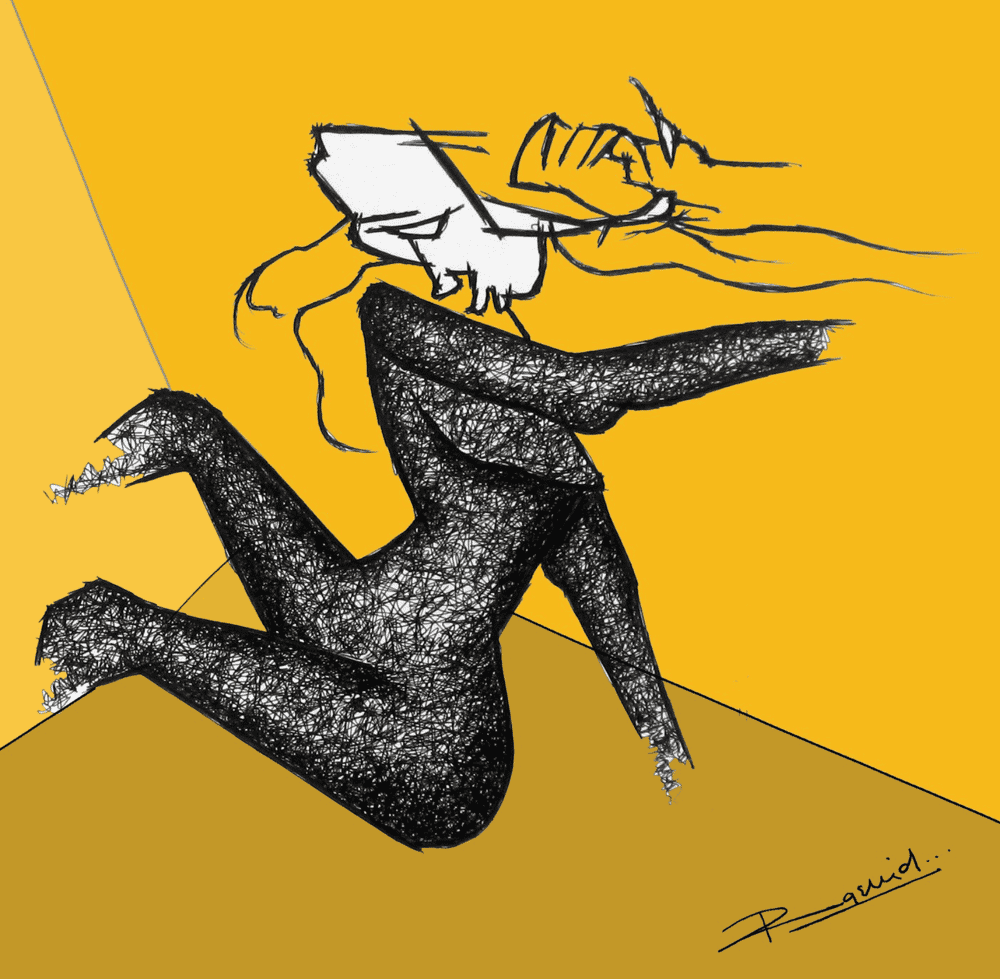

Drawing Hundred Series
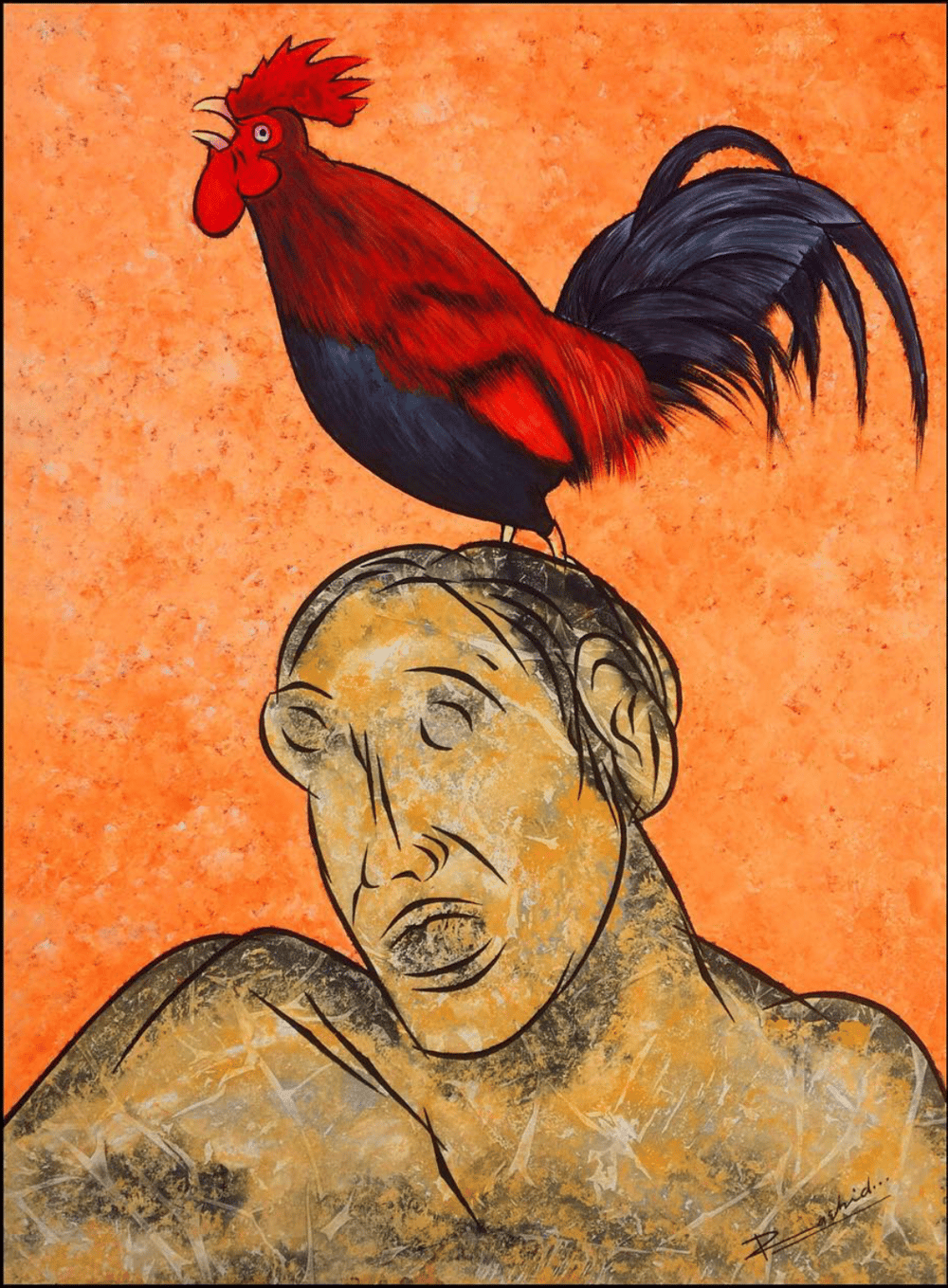

Golden Chance
Davangi: Are there any artists, their methodologies, or aspects of their lives that inspire you? (This could include peers whose work you find particularly exciting.)
Rashid: Apart from M.F. Husain sahab, I am deeply influenced by the works of Tyeb Mehta, Jogen Chowdhury, K.G. Subramaniam, J. Ram Patel, Syed Haider Raza, and V.S. Gaitonde. While Husain sahab initially inspired me, as I delved deeper into my studies, it was Tyeb Mehta's lines that left a lasting impression, and I gradually began to follow his work.
I studied Tyeb Mehta's art extensively. Jogen Chowdhury's lines and unique style also captivated me, and I incorporated both Tyeb Mehta and Jogen Chowdhury into my studies and practice, hoping to achieve a similar mastery of strokes and points in my own work.
These artists of Indian contemporary art have profoundly influenced me, and I consider them as major sources of inspiration in my art practice. Each of them exhibited an exceptional command over their lines, and they remain some of the most celebrated figures in Indian contemporary art.
Later, when I felt the need to explore new styles and greater freedom in my work, I became increasingly drawn to abstract art. This is when I developed an appreciation for the works of J. Ram Patel, Syed Haider Raza, and V.S. Gaitonde.
In the European art tradition, I have been particularly impressed by Leonardo da Vinci and Michelangelo. Michelangelo’s dedication and work ethic were extraordinary; he would work tirelessly, day and night, achieving a unique level of perfection in his craft. His life and artistic journey continue to inspire me. Likewise, I admire Leonardo da Vinci, who was not only an artist but also a philosopher and scientist. He was the first person to imagine and sketch flying machines. The lives and work of these artists have always made a profound impact on me.
Davangi: You deeply admired the works by Jeram Patel and felt like practicing abstract. Why did you switch to abstract?
Rashid: I have always loved the color black. During my BFA, I met J. Ram Patel and saw his works. Later, when I moved to Delhi and saw his work in the Modern Art Gallery, my appreciation for him grew even deeper. That’s when I began incorporating black into my own work.
Upon arriving in Delhi, I made a conscious decision to create my own identity without copying any artist. I wanted to work in a new style, with complete freedom—no limits, no restrictions. I aspired to work on a large scale. Gradually, I began transforming my work from concrete to abstract.
During my studies, after seeing J. Ram Patel's works, I became drawn to abstraction. Syed Haider Raza Sahab's "Bindu" also had a profound impact on me. He dedicated his entire life to working on the "Bindu" and executed it with such simplicity, which I found very inspiring.
I also developed an admiration for V.S. Gaitonde's abstract works. I studied his art and appreciated the simplicity with which he approached his work.
While at Delhi College of Art, I worked in both concrete and abstract forms. However, after graduation, I fully embraced abstract art as a way to express myself more freely. I was now completely ready to dive into abstraction. After passing out, I began experimenting exclusively in abstract art. I poured my full attention into exploring and experimenting with abstract forms on canvas.
This is how I committed to practicing abstract art and fully transitioned into it.
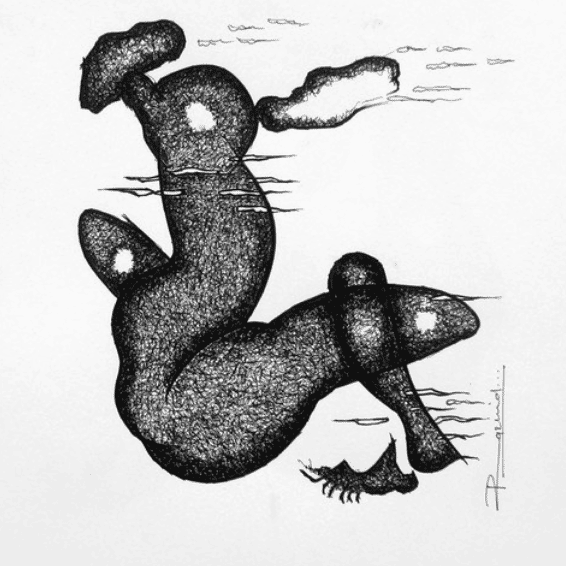

Drawing Hundred Series
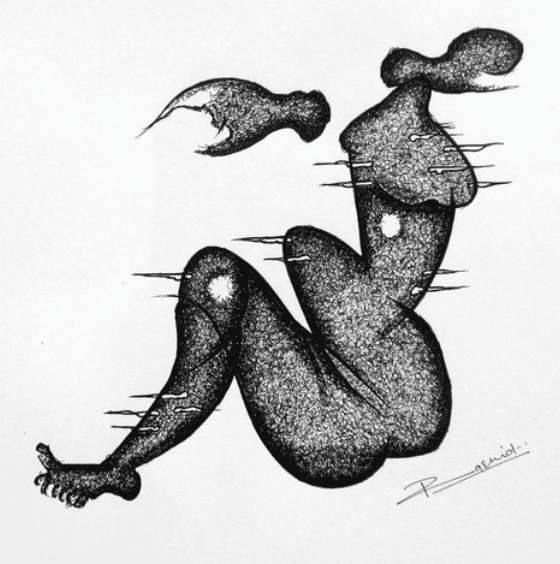

Drawing Hundred Series
Davangi: How was your experience studying in Allahabad University and how did you reach this final decision that you will pursue your practice?
Rashid: Both my BA and BFA years at Allahabad University were some of the best days of my life. During my BA, I had the privilege of meeting many legendary people. Although I wasn’t the best at academics, I gave my all and never held back in my efforts. The BFA experience was different—it felt like everything was aligned with my passion. For four years, I focused on skill-based work. Once I joined the BFA program, I made a firm decision: I would become the next M.F. Husain. This was a "do or die" moment for me, and I channeled all my energy into art. The guidance from our mentors—Pramod Barua Sir, Ajay Jaitley Sir, and Sunil Kali Sir—breathed life into me as an artist. During my BFA, I traveled to Bhopal for an exhibition. It was there, at Bharat Bhavan Gallery, that I saw M.F. Husain's painting for the first time. It felt as though I had personally met him. His work left a profound impact on me. It was also at Bharat Bhavan that I encountered the works of Ram Kumar and J. Swaminathan, both of whom left a deep impression on my mind. Throughout my BFA years, I visited exhibitions in Kolkata, Guwahati, Chandigarh, Delhi, Bhopal, Varanasi, and Lucknow, meeting various artists along the way. These experiences cemented my resolve: I was determined to become a great artist and fully commit to my art practice.
Davangi: MF Hussain was your no.1 inspiration. Please elaborate on how he influenced your practice?
Rashid: This is a significant question for me. When a child is born, the first person they meet is their mother. Similarly, when I stepped into the world of art, the first artist whose name I encountered was M.F. Husain—the most famous and celebrated artist in India. His name became imprinted on my heart and mind. There were stories about him that captivated me: how he used to walk barefoot, how, at one point, poverty forced him to sell his slippers, and how he continued to walk barefoot, even on airplanes. Yet, he owned seven Ferraris. These stories fascinated and inspired me.
After joining the BFA program, I started reading more about him. It was said that Husain sahab sketched relentlessly, so I, too, immersed myself in sketching. I focused all my attention on it, and soon, I fell in love with the lines in his work. His strokes, his color themes, everything about his style drew me in. I found his work deeply artistic—his lines were both precise and free, and I began to enjoy the act of drawing lines with that same sense of freedom. I started imitating him, and the more I did, the more I enjoyed it.
I learned that Husain sahab also directed films, and to this day, creating art movies remains a dream project of mine. Even now, Maqbool Fida Husain sahab is a hero to me. During my BFA, I consciously tried to mirror his influence in my work. I wanted his impact to be evident in my art. I also adopted his work ethic, believing that hard work should always be visible in one’s creations. Husain sahab’s life and dedication to art deeply influenced both my art practice and my outlook on life. Like him, I aspire to contribute something meaningful and excellent to the world of art.
Davangi: Why did you choose to work with acrylic as a medium?
Rashid: I have always sought freedom of thought in my work, without any restrictions—whether in terms of medium or form. Initially, I worked with oil paints, but they took a long time to dry. I found more possibilities in acrylic compared to oil paints, and I wanted to explore those opportunities. For me, acrylic has proven to be an excellent medium that compliments my work, allowing me greater freedom. I can experiment far more with acrylic, and it has become the best medium for me in terms of creative exploration. Because of these possibilities, I chose to work with acrylic.
Davangi: Would you like to discuss any upcoming projects? Do you plan to experiment with different mediums in your future work? (You can mention about your watercolors & transition in your canvas work that we were discussing)
Rashid: I plan to continue experimenting with my work in the future, particularly with acrylics, while exploring new techniques. I'm also interested in incorporating mixed media into my practice. I’m considering working on hard surfaces like plywood alongside canvas, as this will allow for more dynamic experimentation. I’m generating new ideas around my subject matter and enjoy working freely on a large scale. I’m planning to create experimental works on large, wall-sized canvases and have already begun working on my next big project. In the near future, I plan to hold an exhibition showcasing these large-scale works.
Click here to view Rashid's Online Viewing Room and learn more about his practice.

